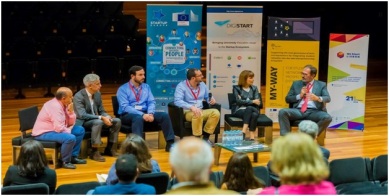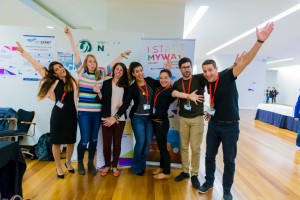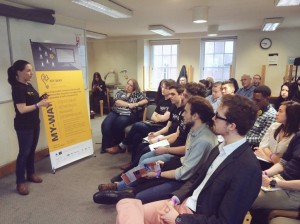PlasCarb combines the production of high-value industrial materials with the treatment of unavoidable food waste.

Do you remember the question that was posed by Krisztina nearly three years ago, in her blog post? Is it possible to turn food waste into a resource?
This question kicked off the PlasCarb project on December 1st, 2013, and since then our team, consisting of seven partner institutions from five EU Member States, has worked hard to answer this question with a well-grounded YES.
This dedication has paid off – with the end of the project on November 30th, 2016, we can present a technology to the European market that has been proven viable through a one-month pilot test. In addition to that, social, environmental and economical assessments, carried out throughout the whole life span of the project, attest the sustainability of the entire PlasCarb value chain.
What can PlasCarb do for our economy?
Food waste is the feedstock of PlasCarb to generate in a first and well established step biogas (CH4 & CO2). After purification, the gas is cracked by a low temperature microwave plasma to yield graphitic carbon (renewable PlasCarbon) and renewable hydrogen.
PlasCarb is circular economy in action! Not only will this technology contribute to the recycling of food waste, but it also uses immanent components to source and supply industry sectors which are today mainly dependent on fossil fuels – the carbon nanoparticle market and the hydrogen economy.
Help spreading PlasCarb
PlasCarb is one of many initiatives to fight against the dangerous landfilling of food waste and to turn our wasteful and linear economy into a creative and circular one. If you are supporting those thoughts, please share the PlasCarb idea with your friends and colleagues. This will help making policy makers and businesses aware and multiply the positive effects of PlasCarb onto the European business landscape. Please visit and share this video where our partners tell the PlasCarb story in their own words. Our project website, http://www.plascarb.eu/, provides more information and the Viability Assessment encourages businesses to adopt the PlasCarb technology.

Back to the roots
Is it possible to turn food waste into a resource? Yes, PlasCarb has the potential to do so, but as Krisztina highlighted in her blog post, we are all in the responsibility to prevent the generation of food waste at its roots. Because it is not sensible to treat food waste which is avoidable with expensive technologies like recycling, composting or even with PlasCarb. Let us act in a more social, environmental and economical conscious manner by choosing sustainable technologies such as PlasCarb.
By: Daniel Frohnmaier






